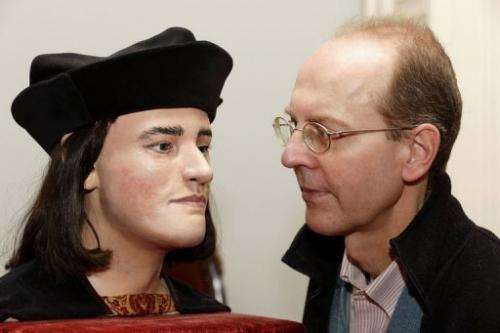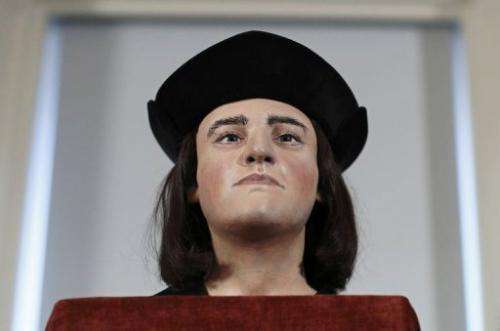Richard III's face revealed for first time in 500 years

The face of England's much-maligned king Richard III was revealed on Tuesday for the first time in 500 years on Tuesday following a reconstruction of his skeleton which was found buried underneath a car park.
The three-dimensional plastic model is based on a CT scan of the skull of the king, who was killed in battle in 1485 after just two years on the throne but lived on as one of history's worst villains in the eponymous play by William Shakespeare.
Academics hope the discovery of his remains under a car park in the central English city of Leicester, complete with the twisted spine of folklore and major wounds to his skull, will lead to a rehabilitation of his reputation.
And Richard III enthusiasts believe the image of his face, until now only depicted in paintings, will be key to rewriting his legend.
"It's an interesting face, younger and fuller than we have been used to seeing, less careworn, and with the hint of a smile," said Phil Stone, chairman of the Richard III Society.
Another member of the society, Philippa Langley, who led the project to unearth the bones of the last Plantagenet king, said the reconstruction showed for the first time what he might have looked like when he died in battle aged 32.
"The portraiture that we have of him that was done in the Tudor era always seems to bring out this guy who looks like he was 50," she told AFP.

"He led armies and he fought many skirmishes and I think you can see that strength of character and that determination."
The task of reconstructing the face—complete with shoulder-length black hair—was led by Caroline Wilkinson, professor of craniofacial identification at the University of Dundee in Scotland, and paid for by the Richard III Society.
Her team created a scientific reconstruction using a CT scan of the remains, without any reference to contemporary portraits of the king, and then "humanised" it by painting the face and adding features such as brows and eyelashes.
Another academic has been trying to establish how Richard may have sounded when he spoke.
Philip Shaw of the University of Leicester examined the king's handwriting, and given that the spelling in those days often reflected local dialect, concluded that he may well have spoken with a Birmingham accent.
The skeleton was found during an archaeological dig at a municipal car park in Leicester last August.
A team at the University of Leicester announced on Monday that DNA tests, carbon dating and examination of bones had proved beyond reasonable doubt that it belonged to Richard, ending a 500-year-old mystery.
After his death at the Battle of Bosworth, near Leicester, Richard's body was buried by Franciscan friars, known as Greyfriars, in an unmarked grave. When their monastery was destroyed in the 1530s, all traces of him disappeared.
Richard's remains will now be re-interred at Leicester Cathedral in a ceremony next year that befits his royal status.
In "Richard III", Shakespeare described a villain who murdered his two young nephews to win the throne, whose hunchback and withered arm were a physical manifestation of his evil.
The skeleton confirms the king did have a twisted spin, but no withered arm.
Enthusiasts also say there is no evidence he killed the young boys, and hope the focus will now shift to the social reforms Richard introduced.
(c) 2013 AFP




















